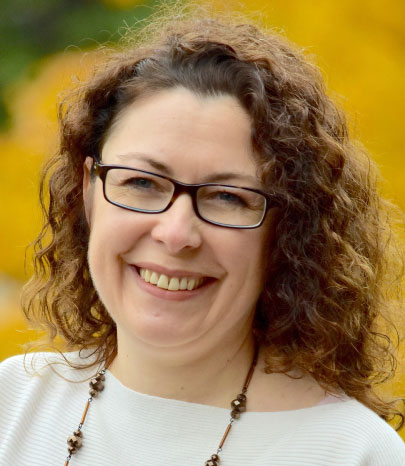Putting the Consumer First, in EDI and at P&G
Adjunct lecturer Helen von den Steinen explains how a relationship between Procter & Gamble and Northwestern's Engineering Design Innovation (EDI) program gives students first-hand experience with human-centered design.
The consumer is boss.
Those four words are paramount to all projects and innovations at Procter & Gamble (P&G), said Helen von den Steinen, principal scientist at P&G Research & Development. They are also the four words von den Steinen stresses most to students in Northwestern's Engineering Design Innovation (EDI) program.
At P&G, von den Steinen is the co-founder of EC30, one of P&G's first direct-to-consumer businesses. She is working on new technology that will make it possible to deliver home cleaning and personal care products in a lightweight, dry form that consumers will be able to activate with water at home.
 In EDI, von den Steinen teaches product innovation in the program's Human-Centered Design studio course. As an adjunct lecturer, she co-teaches with EDI faculty while bringing P&G projects into the classroom for students to work on as they learn about innovation and human-centered design.
In EDI, von den Steinen teaches product innovation in the program's Human-Centered Design studio course. As an adjunct lecturer, she co-teaches with EDI faculty while bringing P&G projects into the classroom for students to work on as they learn about innovation and human-centered design.
"You have to start with humans and their needs to develop meaningful innovation and improve their lives," she said. "However, this is not as easy as it sounds, and the students need to learn this through practice. They need to learn empathy to understand other people’s needs, especially for consumers who are different from them."
Von den Steinen has worked with EDI students since 2016, but the partnership between the program and P&G dates back to 2010. During that time, students have worked on a wide range of projects across most of the company's product categories. In von den Steinen's most recent class, students collaborated on projects related to hair care products, zero waste, product packaging, and period protection products.
The students get hands-on experience with real products, while P&G benefits from new ideas and fresh perspectives.
"Students need to learn to understand and define the problem they are trying to solve before they jump to solutions," she said. "If you fall in love with a technology or solution too early and lose sight of the human needs, you risk creating an elegant solution to a problem that no one has."
Von den Steinen also teaches a CPG Product and Business Innovation Studio elective course that attracts graduate students from Northwestern Engineering, the Kellogg School of Management, and the Medill School of Journalism, Media, Integrated Marketing Communications. Students work in diverse teams to develop product and business model ideas for a specific P&G project.
Von den Steinen sees a unique combination of problem-solving skills and appreciation of human-centered design among EDI students.
"The holistic nature of the EDI program lets students not just learn to design, but also how to do design research, develop strategies, and tell the story of their innovation," she said. "The students get a chance to practice human-centered design in several studios and then bring it together into their thesis, which allows them to both experiment with and hone their design skills."

